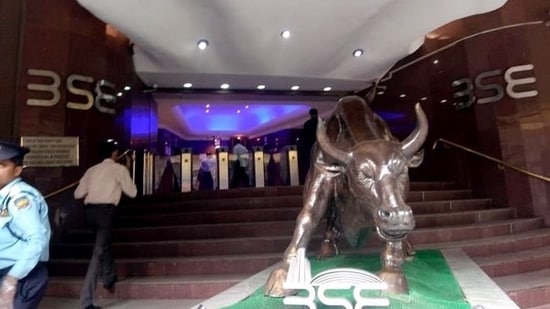BSE Sensex created history a few days ago by crossing the 70,000 mark on the Indian stock market, leading to a highly profitable week for most investors. After hitting a high of 70,057pts on December 11, it fell slightly, ending Monday at 69,988, up 0.15% from the previous close, on Friday.

The index, which was launched on January 2, 1986, consists of 30 stocks that are representative of the Indian stock market. It is seen as an important indicator of the country’s India’s financial health.
While Sensex cannot be held as an indicator of the economy, it sure is a great indicator of the progress of industries and investor sentiment in the country. What is notable is that Sensex hit its all-time high just after the results of assembly elections were announced in five states.
Here we take a look at the performance of S&P BSE Sensex on several days of major political, economic, or financial significance.
The boom of Sensex in 2023
The year 2023 has been robust for Indian markets despite global fissures such as the wars in Ukraine and West Asia. Sensex has seen a jump of around 12,400pts since in the eight months since the end of March, when it was 57,5271pts. In late November, the broader Nifty 50 also touched 20K for the first time.
2021-2022: The post-Covid spike
On January 21, 2021, Sensex opens at 50,096.57 points, the first time it touches the 50,000 mark. Within eight months, on September 23, 2021, it hits 60,000 points closing at 60,048.47. This is the fastest the index has gained 10,000 points and is widely attributed to the impact of the rollout of the Covid-19 vaccines.
2020: Covid lockdown
The Covid lockdown across India saw a major downfall of the stock market, with a 13 percent tumble on a single day, when the Centre announced the long-drawn lockdown. It is considered the steepest intraday fall of Sensex till this date.
2019: Modi’s government’s return to power
On May 23, 2019, just three days before the Modi government was set to return to power, exit poll predictions led to a massive spike of 3.8 percent in Sensex, touching the 40,000 mark for the first time in June.
2016: Demonetisation
On November 9, the day after Prime Minister Narendra Modi announces the demonetisation of high-value notes, Sensex intraday returns fall 1.23%. A bear-run by between November 11 and November 21 sees the index losing 6.6% in value.
2014: Narendra Modi becomes prime minister
When NDA won the Lok Sabha elections in 2014, the pro-business image of Narendra Modi drove up the markets by 8 percent towards the end of May, when he became the prime minister.
2009: Congress win leads to best-ever day for Sensex
The UPA-led by Congress secured its second term in 2009. Markets rallied 17.34% on May 18, 2009, in what still remains the single best day ever for Sensex.
2008: Great Recession
After the Great Recession hit multiple countries across the globe in 2008, Indian markets along with the global bourses came crashing down in what was one of the worst days for the global financial markets. Indian financial markets were left paralyzed after a fall of over 37 per cent.
2006: Sensex touches 10k points
The S&P BSE Sensex touches 10,000 points on January 2, 2006, but later pares gains ending the day at 9980.42. It finally closes above 10K in February, taking a little more than 244 months for it to touch 10,000 points since the day of its inception.
1992: Harshad Mehta scam
After the Harshad Mehta scam unfolded in front of the nation, Sensex fell over 34 percent between Dec 1992 and July 1993. Not surprisingly, the 1992-93 fiscal is the worst in history of Indian markets – ending with a 46.7 percent dip.
